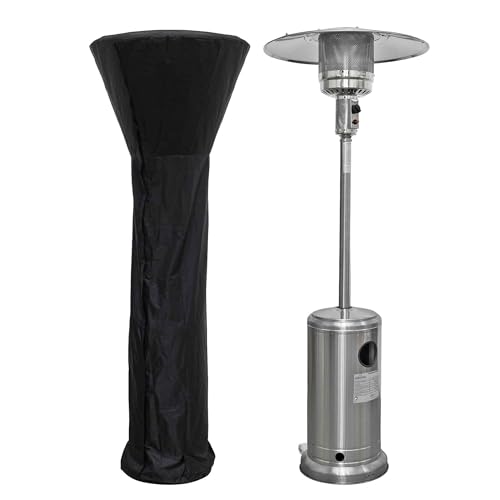Buying Gas Radiant Heaters: A Comprehensive Guide
Gas radiant heaters have gained appeal over the last few years for their performance and ability to offer immediate heat. As more house owners and services search for ways to keep their spaces comfortable, understanding the features, advantages, and considerations when acquiring these heating units can be extremely informative. This short article dives into the intricacies of gas radiant heaters, helping possible buyers in making notified choices.
What are Gas Radiant Heaters?
Gas radiant heaters are gadgets that utilize propane or natural gas to discharge heat directly into a space. Rather than heating the air, they warm items and individuals in their vicinity, providing convenience quicker and effectively. These heaters are popular for both indoor and outdoor settings due to their adaptability and effectiveness.
Secret Features of Gas Radiant Heaters
- Direct Heating: Unlike conventional heaters that warm the air, gas radiant heaters supply direct heat, making them an efficient option for quickly heating up spaces.
- Mobility: Many designs are readily available as portable units, allowing them to be easily moved from one area to another.
- Fuel Variety: Gas radiant heaters can be powered by gas or propane, offering users flexibility based on accessibility and choice.
- Adjustable Settings: Most gas radiant heaters come with adjustable heat settings, allowing users to personalize the level of heat based on their requirements.
Advantages of Gas Radiant Heaters
- Energy Efficiency: These heaters transform gas into heat efficiently, resulting in lower utility bills compared to electrical heaters.
- Quick Heating: Radiant heat is felt almost instantly, making these heaters suitable for unexpected temperature drops.
- Low Maintenance: Gas radiant heaters normally require less upkeep than electrical models, making them a problem-free option.
- Ecologically Friendly: When powered by tidy gas, these heaters can be a more ecologically sustainable choice compared to other heating techniques.
Kinds Of Gas Radiant Heaters
When it comes to choosing a gas radiant heater, it's essential to understand the different types readily available. Below are the most common options:
- Indoor Gas Radiant Heaters: Designed for indoor spaces, these heaters are generally vented or unvented and often featured integrated safety features.
- Outdoor Gas Radiant Heaters: Commonly used in outdoor patios or outdoor dining locations, these heaters are created to hold up against the elements.
- Wall-Mounted Gas Radiant Heaters: A space-saving choice, these systems are ideal for smaller spaces and can be equipped with various heat outputs depending upon the area's needs.
- Freestanding Gas Radiant Heaters: These portable models can be utilized in different locations, best for those who require versatility.
Purchasing Guide: How to Choose the Right Gas Radiant Heater
When acquiring a gas radiant heater, several factors need to be considered to guarantee you select the right model for your space:
1. Heating Capacity
- Determined in BTUs (British Thermal Units), the heater's capability identifies how much location it can effectively warm. Purchasers must assess their particular requirements based upon space size.
| Space Size (sq ft) | Recommended BTUs (for Gas Radiant Heaters) |
|---|---|
| 100 - 200 | 5,000 - 10,000 BTUs |
| 200 - 400 | 10,000 - 20,000 BTUs |
| 400 - 600 | 20,000 - 30,000 BTUs |
| 600 - 800 | 30,000+ BTUs |
2. Type of Gas
- Think about whether you will be using propane or natural gas, as various heaters deal with different fuel types.
3. Safety Features
- Search for designs equipped with security functions such as automatic shut-off valves, tip-over defense, and oxygen deficiency sensing units.
4. Setup Requirements
- Some heaters might need professional setup, specifically vented designs. Make certain to consider the costs and requirements related to setup.
5. Mobility
- If flexibility is important, think about portable models that can be easily moved from one place to another.
Setup and Maintenance
Gas radiant heaters are typically uncomplicated to set up, especially portable designs. However, vented options may demand professional setup to guarantee they fulfill local security codes.
Upkeep typically includes:
- Regular cleansing to avoid dust accumulation.
- Checking gas connections and fittings for leakages.
- Making sure security functions are practical.
Suggestion: Regular checks around the unit can assist extend its lifespan and keep security.
Often Asked Questions (FAQs)
Q1: Are gas radiant heaters safe for indoor use?A1: Yes
, as long as they are appropriately vented and equipped with required safety features, they can be securely used indoors.
Q2: Can gas radiant heaters be used in enclosed spaces?A2: Unvented gas heaters can present risks in enclosed spaces due to possible suffocation or carbon monoxide buildup. Always make sure adequate ventilation. Q3: How do I understand what size heater I need?A3: The suitable size depends on the area you intend to heat. Refer to the BTU chart
above to identify your needs. Heating Appliances : What is the distinction between propane and natural gas heaters?A4: The primary difference lies in their energy source
; propane is provided by means of tanks, while natural gas is generally piped into homes. Q5: How can I make the most of efficiency?A5: Ensure the heater is properly sized for your space, maintain it routinely, and consider utilizing it in mix
with other heating methods for maximum convenience. Gas radiant heaters can be a fantastic addition to any home or service, using energy-efficient and fast heating solutions. By comprehending the various types, features, and factors to consider
when purchasing, buyers can make educated decisions that meet their heating requires. With Outdoor Heating Products , these heaters supply convenience, dependability, and an inviting environment throughout cooler seasons.

